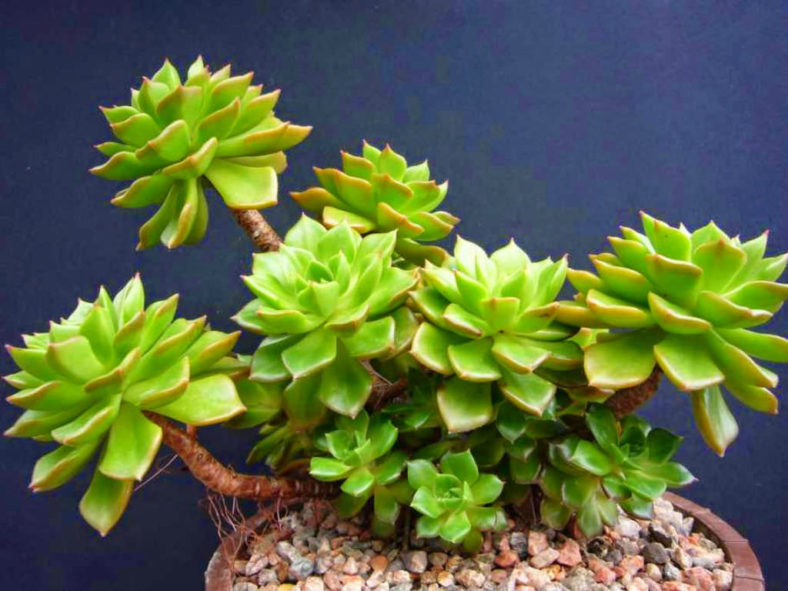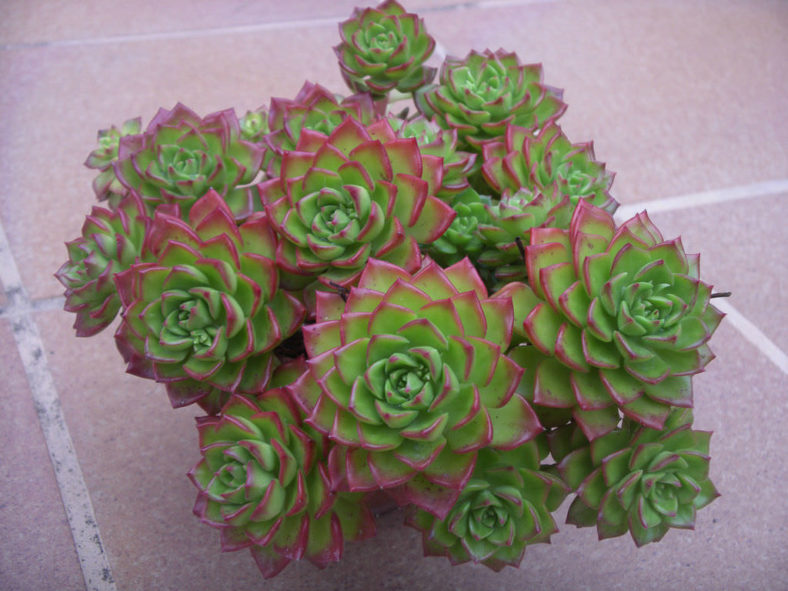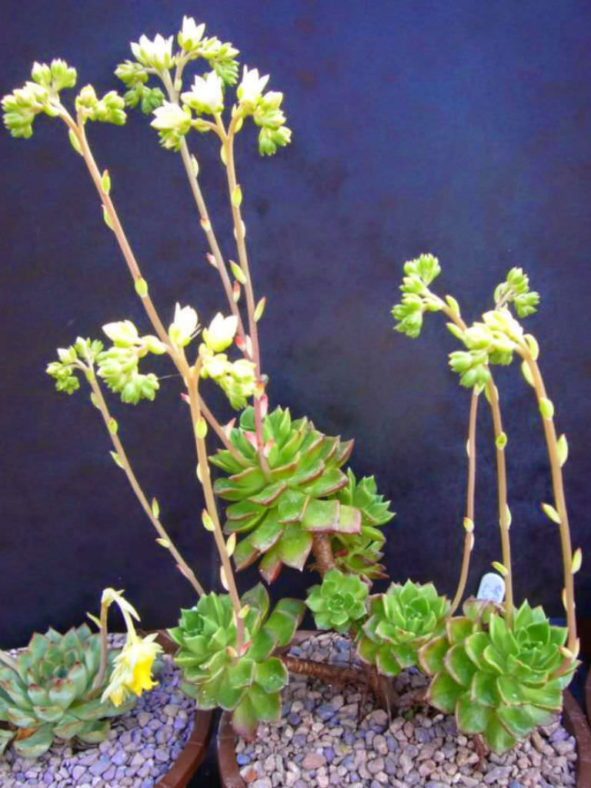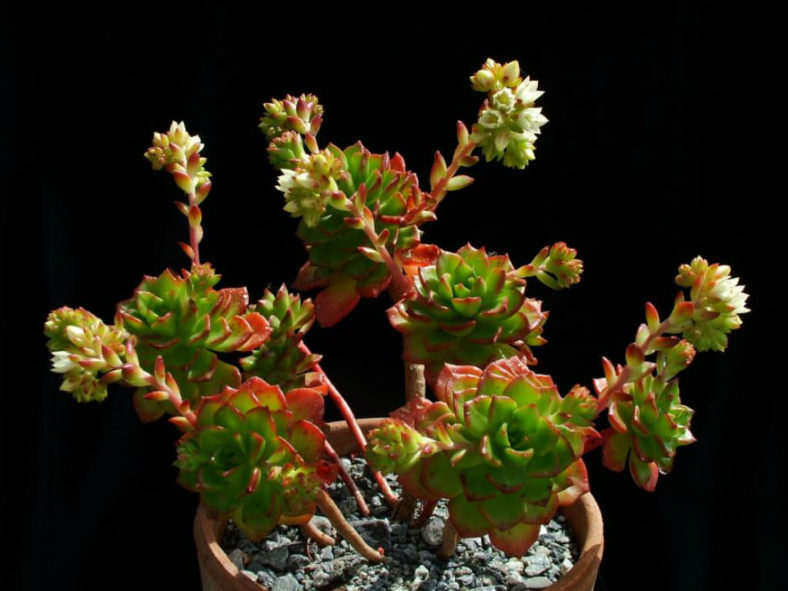Scientific Name
×Sedeveria 'Letizia'
Common Name(s)
Lety's Sedeveria
Scientific Classification
Family: Crassulaceae
Subfamily: Sempervivoideae
Tribe: Sedeae
Nothogenus: ×Sedeveria
Origin
×Sedeveria 'Letizia' is an intergeneric hybrid that results from a cross between Sedum cuspidatum and Echeveria setosa var. ciliata. According to information on the Sedum Society, this older hybrid went unnamed until Jean-Michel Moullec published the name in the January 2006 Sedum Society Newsletter (No. 7), honoring his Italian friend Letizia Alleruzzo. However, it is speculated that this plant likely originated from Fred Wass, a British cactus and succulent collector.
Description
×Sedeveria 'Letizia' is a beautiful small succulent that forms a cluster of stems with rosettes of deltoid leaves at the end. It grows up to 8 inches (20 cm) tall, branching from the base. Rosettes are up to 2.4 inches (6 cm) in diameter. The leaves are green with fine hairs along the margins and keel and red margins in full sun.
In spring, inflorescences rise from the rosettes and bear white flowers in scorpioid clusters.

Hardiness
USDA hardiness zones 9a to 11b: from 20 °F (−6.7 °C) to 45 °F (+7.2 °C).
How to Grow and Care
When growing Sedums, keep in mind that these plants need very little attention or care. They will thrive in conditions many other plants thrive in but do just as well in less hospitable areas. They are ideal for that part of your yard that gets too much sun or too little water to grow anything else. A common name for Sedum is Stonecrop because many gardeners joke that only stones need less care and live longer.
Sedum is easily planted. For shorter varieties, simply laying the plant on the ground where you want it to grow is usually enough to get it started there. They will send out roots from wherever the stem touches the ground and root itself. If you want to ensure the plant starts there, add a very thin soil covering.
You can break off one of the stems for taller varieties and push it into the ground where you want to grow it. The stem will root very easily, and a new plant will be established in a season or two.
Learn more at How to Grow and Care for Sedum.
Links
- Back to nothogenus ×Sedeveria
- Succupedia: Browse succulents by Scientific Name, Common Name, Genus, Family, USDA Hardiness Zone, Origin, or cacti by Genus
Photo Gallery
Click on a photo to see a larger version.


